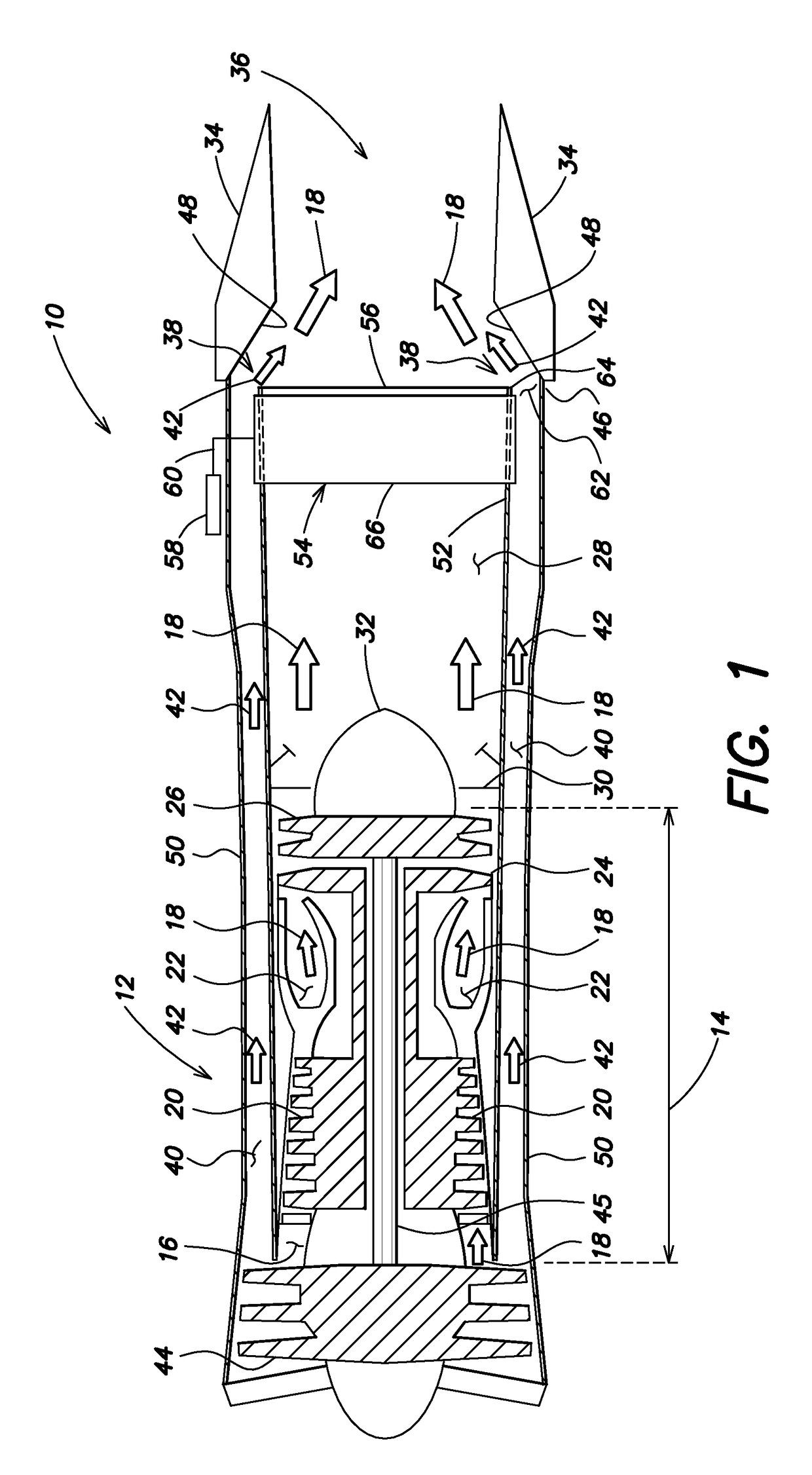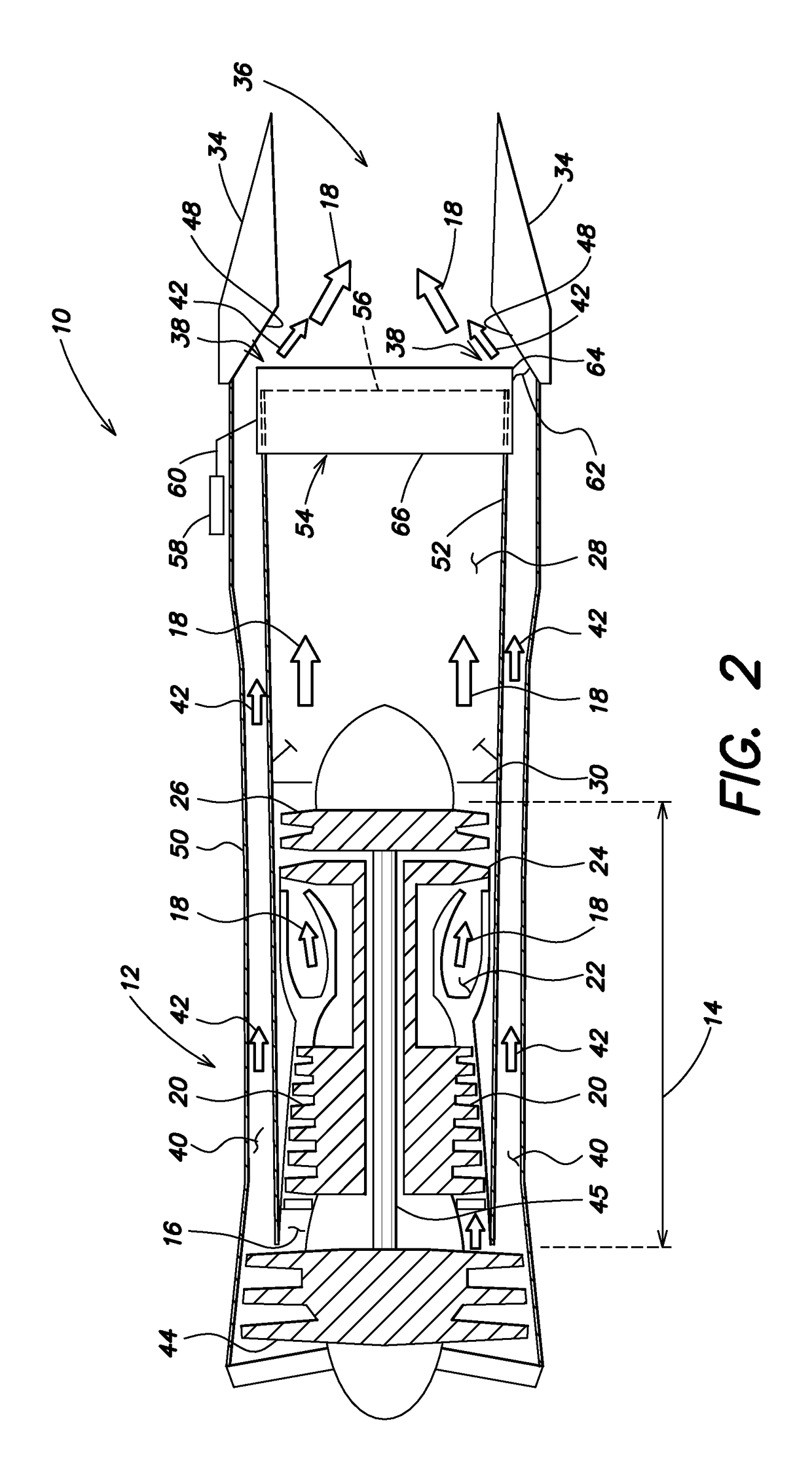Gas turbine engine system for modulating flow of fan by-pass air and core engine air
a technology of gas turbine engine and by-pass air, which is applied in the direction of engine control, machine/engine, engine manufacture, etc., can solve the problems of pressure drop in both by-pass air and core fuel air mixture within the augmentor, and substantial thrust loss from the fan air stream, so as to maximize the cooling of the convergent wall and minimize the effect of thrust loss
- Summary
- Abstract
- Description
- Claims
- Application Information
AI Technical Summary
Benefits of technology
Problems solved by technology
Method used
Image
Examples
Embodiment Construction
[0024]Referring to the drawings in detail, FIG. 1 shows a simplified schematic cross-sectional drawing showing a gas turbine engine system for modulating flow of fan by-pass air and core engine air constructed in accordance the present disclosure and generally designated by the reference numeral 10. The system includes a gas turbine engine 12 having an engine core 14 defining passageways 16 for directing flow of the core engine air (represented by flow arrows designated with reference numeral 18) sequentially through a compressor 20, a combustor 22 wherein the air is combusted with a fuel. The combusted engine core air then passes through and rotates a high pressure turbine 24, a low pressure turbine 26, and then passes out of the engine core 14. Optionally, the engine core air 18 may then pass through an augmentor 28 (as shown in FIG. 1) or “afterburner”, wherein additional fuel and air are admitted and ignited by an ignition ring 30 to produce additional thrust, as commonly found ...
PUM
 Login to View More
Login to View More Abstract
Description
Claims
Application Information
 Login to View More
Login to View More - R&D
- Intellectual Property
- Life Sciences
- Materials
- Tech Scout
- Unparalleled Data Quality
- Higher Quality Content
- 60% Fewer Hallucinations
Browse by: Latest US Patents, China's latest patents, Technical Efficacy Thesaurus, Application Domain, Technology Topic, Popular Technical Reports.
© 2025 PatSnap. All rights reserved.Legal|Privacy policy|Modern Slavery Act Transparency Statement|Sitemap|About US| Contact US: help@patsnap.com



